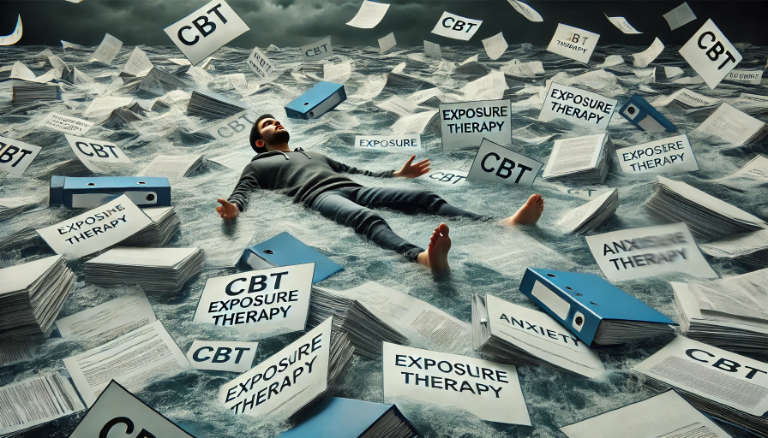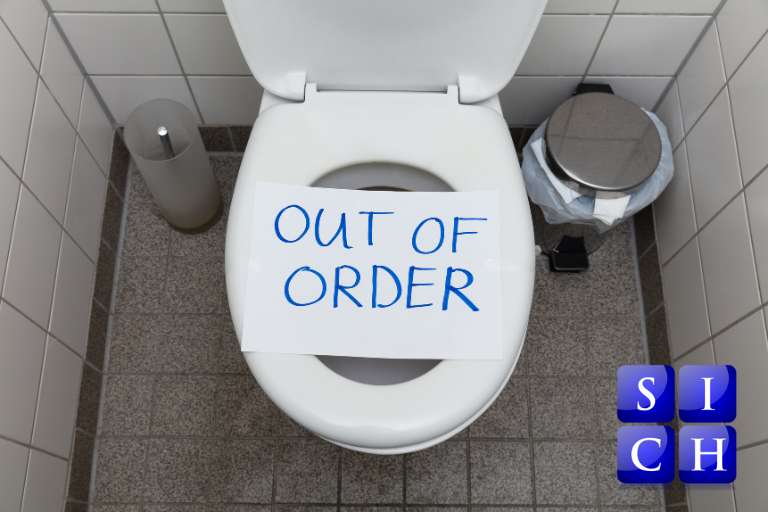Table of Contents
- A Silent Struggle Where Millions Say “Toilet anxiety ruins my life”
- The Flaws in Conventional Treatment Approaches
- The Real-Life Impact of Toilet Anxiety
- Why Traditional Treatments Often Fail
- So, What Actually Works?
- How Hypnotherapy Provides a Permanent Solution
- Breaking Free from Toilet Anxiety for Good
A Silent Struggle Where Millions Say “Toilet anxiety ruins my life”
Introduction
Toilet Anxiety is a real and often debilitating condition, with many sufferers feeling like they have no escape, frequently saying, “toilet anxiety ruins my life.”, yet it remains widely misunderstood and underreported. Many sufferers feel isolated, believing they are the only ones experiencing this overwhelming fear. They will often state “Toilet anxiety ie ruining my life“.
In this article, we will explore the real impact of Toilet Anxiety, why traditional treatments often fail, and how our specialised hypnotherapy provides a highly effective solution.
Recent insights into Toilet Anxiety reveal surprising patterns in its prevalence and impact. Many sufferers experience fear disproportionate to any actual risk, leading to life-altering behaviours.
In this article, we will examine the latest research on Toilet Anxiety, why avoidance tactics worsen the condition, why traditional treatments often fail, and how our specialised hypnotherapy provides a highly effective solution for people around the globe.

The sheer fact that we are inundated with clients, from around the globe, needing our help shows that Toilet Anxiety is far more common than most people realise. This is largely due to the deep-rooted feelings of embarrassment and shame associated with the condition, making sufferers reluctant to talk about it. Because it is rarely discussed openly, many assume it is uncommon, yet the people who do seek help often represent only the most desperate cases, meaning the true scale of the issue is likely much larger.
76.3% of clients have never had an accident as an adult
Yet they live in constant fear of one happening.
This demonstrates the power of the mind in amplifying fears beyond rational reality. The fear of embarrassment or public humiliation often outweighs actual risk, reinforcing avoidance behaviours.
Many sufferers develop elaborate coping mechanisms, such as mapping out toilet locations or restricting food or fluid intake, to manage a fear that, in most cases, has never materialised. However, these avoidance strategies do not solve the problem, in fact, they make it worse.
By continually reinforcing the belief that danger is present, avoidance cements the fear deeper into the subconscious, making it more powerful over time. Many people feel completely trapped, often expressing, “toilet anxiety ruins my life,” as they struggle to find a way forward. The brain learns that toilets must always be mapped out and that liquid intake must always be controlled, creating a dependence on these behaviours rather than addressing the underlying fear itself.
In reality, avoidance is the enemy of recovery, as it prevents the brain from learning that the fear is unnecessary and that normal toilet habits can be restored without anxiety.
The Flaws in Conventional Treatment Approaches
100% of our clients with Toilet Anxiety, regularly use coping mechanisms that simply don’t work.
This highlights the major flaw in conventional approaches to treatment and why coping strategies don’t work. Despite their best efforts, sufferers continue relying on avoidance techniques that provide temporary relief but ultimately reinforce their fears. They often find themselves unable to stop these coping mechanisms, convinced that “just in case” they might work this time.
This cycle of reassurance-seeking keeps them trapped in avoidance behaviours, preventing them from building new “normal” behaviour patterns that the subconscious can use as a blueprint for future behaviours and, ultimately, beliefs.

Why coping strategies don’t work
The problem is that most therapists don’t fully understand this issue and continue to use outdated techniques that fail to address the underlying fear. Many rely on traditional exposure therapy, building coping strategies or general anxiety treatments, which may not be tailored to the specific subconscious drivers of Toilet Anxiety.
This constant state of hyper-vigilance takes a toll on mental well-being, limiting life experiences and reinforcing the cycle of anxiety. This is in part why coping strategies don’t work.
81.6% say they can ‘put off’ going to the toilet despite having Toilet Anxiety
This is not because their urgency to go is reduced, but because at home, the anxiety is absent due to the sense of safety. Clients report that when they are at home with nothing significant happening, they can delay going to the toilet for a reasonable amount of time, even though they feel the same urgency.
This suggests that the problem is not physical but linked to anxiety, which only emerges in situations where they feel a lack of control or uncertainty. This reinforces that the issue is not about a physical need but a fear response triggered by their beliefs about external circumstances.
Only 10.5% experience the issue at home
This suggests that for 89.5% of sufferers, Toilet Anxiety is not caused by a physical condition but by their fictitious beliefs about themselves. These beliefs trigger the anxiety, leading to behaviours designed to keep them safe from an imagined threat rather than an actual danger.
Conditioning and sensitising events can play a crucial role in shaping these fictitious beliefs. Negative experiences, social embarrassment, or even parental influences can condition an individual to associate certain situations with danger. Over time, these associations become deeply ingrained, reinforcing the belief that toilet access must always be controlled to avoid perceived threats, even when no real danger exists.
However, if Toilet Anxiety persists at home even in the absence of stress, it may indicate that an underlying physiological issue, such as IBS, is contributing to or maintaining the condition. This means it is not purely psychological, as there may be a physiological element to it. That being said, even though a physical element may be present, the condition still remains largely a social and situational anxiety.
Despite these facts, most people with Toilet Anxiety suffer in silence, too embarrassed to seek help or unsure where to turn. They believe ‘toilet anxiety ruins my life’ this makes it difficult for them to plan anything for the future without fear.
The Real-Life Impact of Toilet Anxiety
94% Report catastrophic over-thinking
For many, the statement “Toilet Anxiety ruins my life” is often not just someone being dramatic, It is a fact, it does!
- 🚷 Avoiding social gatherings, restaurants, or events for fear of needing the toilet.
- ✈️ Cancelling holidays or avoiding long journeys due to lack of toilet access.
- 🏢 Struggling at work – dreading long meetings or feeling embarrassed about frequent bathroom visits.
- ❤️ Strained relationships – partners may not understand the severity of the anxiety.
The condition can also create secondary anxieties, such as fear of judgement, fear of embarrassment, and even feelings of shame or guilt.
A Case Study: The Train Journey That Becomes a Battle
Even something as simple as taking a train journey can become a source of overwhelming fear. The anxiety begins long before they even leave home.
- “What if there’s no toilet on the train?”
- “I checked the website, and it said this train had a toilet… or was that the next one?”
- “What if it’s out of order?”
- “What if someone is in there and I can’t wait?”
By the time they reach the station, the fear has escalated to the point where they are already considering cancelling the journey. Even if they board the train, they may spend the entire trip scanning the carriage, hyper-aware of every movement around the toilet door. Their thoughts spiral into worst-case scenarios, reinforcing the belief that they are constantly at risk.
The need for certainty causes endless second-guessing and overanalysing, making even the most routine journeys exhausting. They are not just afraid of needing the toilet – they are terrified of the gut-wrenching panic that comes with feeling trapped, out of control, and unable to escape the fear. This is why so many sufferers say, ‘Toilet Anxiety ruins my life,’ as they struggle daily with uncertainty and distress.
Why Traditional Treatments Often Fail
Our new research into Toilet Anxiety has identified the most common treatment approaches that people try before entering our specialised Toilet Anxiety treatment and finding lasting resolution and returning to more normal behaviours and beliefs.
“I have never spoken to, met or been contacted by anyone who has found any other treatment to be effective for Toilet Anxiety. If you know someone, pass on my number, I would love to talk to them!”
Paul Howard
The fact that so many individuals seek our help only after trying multiple other treatments is a telling insight into the effectiveness of these conventional approaches. It highlights how often these methods fail to provide real, lasting change, leaving people searching for a solution that actually resolves toilet anxiety and turns it around allowing them to live a normal life free of anxiety.
In our first session, many of our clients tell us, ‘Toilet Anxiety ruins my life,’ this is because often they have tried multiple conventional treatments that fail to provide any real, lasting change.
According to our new research, the most common treatment approaches that people tried before are:
- 🩺 Medication: Some doctors prescribe anti-anxiety medication or laxatives for relief, but this does not tackle the underlying fear response.
- 💬 CBT (Cognitive Behavioural Therapy): This is often helpful but does not always reach the deep subconscious fears driving the anxiety.
- 📌 Toilet Mapping Apps: While these provide short-term comfort, they reinforce the belief that finding a toilet is a constant priority.
- 🍽 Dietary Adjustments: While managing food and drink intake may help physical symptoms, it does not remove the fear itself.
So, What Actually Works?
47% of clients seeking help for Toilet Anxiety have never tried any treatment before – showing how overlooked this issue is.
Treating Toilet Anxiety effectively requires a highly specialised approach, one that goes beyond simply managing symptoms and instead targets the root causes of the fear.
Unlike exposure therapy, which forces individuals into distressing situations, our methods work with the subconscious mind to create lasting change without re-traumatising the client.
The first step is identifying and targeting the conditioning and sensitising events that may have triggered the anxiety.

These events can be subtle, often masked by external circumstances or buried beneath layers of environmental influences. Many clients are unaware of the exact cause, but through a precise approach, these hidden triggers can be uncovered and addressed.
Where necessary, a new normal is established. This means creating new experiences that naturally integrate with day-to-day life, reinforcing safe and positive normal everyday behaviours. These events are then linked with new, anxiety-free behavioural patterns, providing the subconscious with alternative, more rational responses.
The subconscious must then be reconditioned to accept these new memories and use them as a basis for reshaping belief systems. The old, fear-based patterns are gradually overwritten, and the safety alarm, once hypersensitive, is reset to function at a normal, rational level.
Perhaps most importantly, the process involves building internal trust in the body. Many sufferers of Toilet Anxiety have lost confidence in their ability to control their own bodily functions, leading to heightened anxiety in situations where they feel uncertain. Restoring this trust is a crucial milestone in recovery. Without this, people remain trapped in the exhausting cycle of anxiety, reinforcing the belief that ‘Toilet Anxiety ruins my life.’
However, these methods are not applied randomly or in isolation. They must be executed in a specific order, ensuring that certain psychological milestones are met before progressing to the next phase. Every technique must be delivered in a way that aligns with the client’s subconscious processing, ensuring the changes take root without resistance.
This is a far cry from the exposure therapy that most clients have tried before, which often exacerbates anxiety rather than resolving it. Instead, our approach is designed to work with the mind’s natural adaptability, allowing clients to break free from their fear in a way that feels safe, controlled, and sustainable.
How Hypnotherapy Provides a Permanent Solution
Unlike traditional approaches, hypnotherapy tackles the root cause of Toilet Anxiety by working with the subconscious mind to retrain fear-based thought patterns. It is not about surface-level symptom management but rather a highly specialised process that reconstructs the way the subconscious processes toilet-related fear.
How Hypnotherapy Works:
- Identifies and targets the conditioning and events that triggered the anxiety. These can be deeply buried, subtle, or obscured by external circumstances. Hypnotherapy allows these hidden triggers to be accessed and addressed safely.
- Establishes a new normal. Clients often need to form fresh, anxiety-free associations with normal toilet behaviours. By creating and reinforcing new events linked to calm and confidence, the subconscious learns a different response.
- Reconditions the subconscious to accept new memories and belief systems. This process gently overwrites irrational fears and resets the mental ‘alarm system’ to respond appropriately rather than react with unnecessary anxiety.
- Restores internal trust in the body. Many sufferers feel as though they have lost control, which fuels their fear. Hypnotherapy rebuilds this trust, removing the doubt and uncertainty that drive avoidance behaviours.
- Executes changes in a precise sequence to ensure lasting impact. Each step must be completed at the right time, with specific techniques applied only when the subconscious is ready to integrate them fully. Done correctly, this ensures change is permanent and free from distress.
Unlike exposure therapy, which forces individuals into high-anxiety situations, hypnotherapy allows clients to make changes without re-traumatising them. Instead of pushing them to endure discomfort, it works with the brain’s natural adaptability to create safe, lasting transformation.
💡 CBT is the most common treatment clients have tried before turning to hypnotherapy – showing that deeper subconscious work is often needed.
Most importantly, hypnotherapy delivers rapid and lasting results.
Most clients see a significant recovery within just 4–5 sessions, with many reporting noticeable improvements even after the first session.
Unlike treatments that focus on managing symptoms, hypnotherapy works at a subconscious level, allowing clients to break free from avoidance behaviours and obsessive thought patterns. As their anxiety diminishes, they begin to re-engage with daily life, feeling more in control and less fearful about being away from a toilet. Over time, this leads to a complete transformation in their confidence, reinforcing the belief that they are no longer controlled by their anxiety.
Many clients who used to hold the idea ‘Toilet Anxiety ruins my life‘ now find themselves living with a newfound sense of freedom and confidence.
Breaking Free from Toilet Anxiety for Good
- Imagine stepping outside without planning your route around toilets.
- Imagine travelling with confidence, knowing you are in control.
- Imagine regaining your social life and freedom.
Toilet Anxiety doesn’t have to define your life. With the right approach, you can train your brain to let go of the fear and regain control over your mind and body.
The Path to Freedom
- Acknowledge the issue. Recognising that Toilet Anxiety is a conditioned response, not a physical necessity, is the first step toward overcoming it.
- Trust in a proven method. Traditional approaches often fail because they focus on the symptoms rather than the underlying subconscious patterns. Our specialised approach is designed to create permanent change.
- Commit to the process. While many clients see results in just a few sessions, lasting change comes from following through with the techniques and allowing the mind to fully adjust.
- Take the first step. The sooner you start addressing the real causes of Toilet Anxiety, the sooner you can reclaim your confidence and freedom.
Ready to take back control? Contact the toilet anxiety specialists at The Surrey Institute of Clinical Hypnotherapy today and start your journey to freedom.

